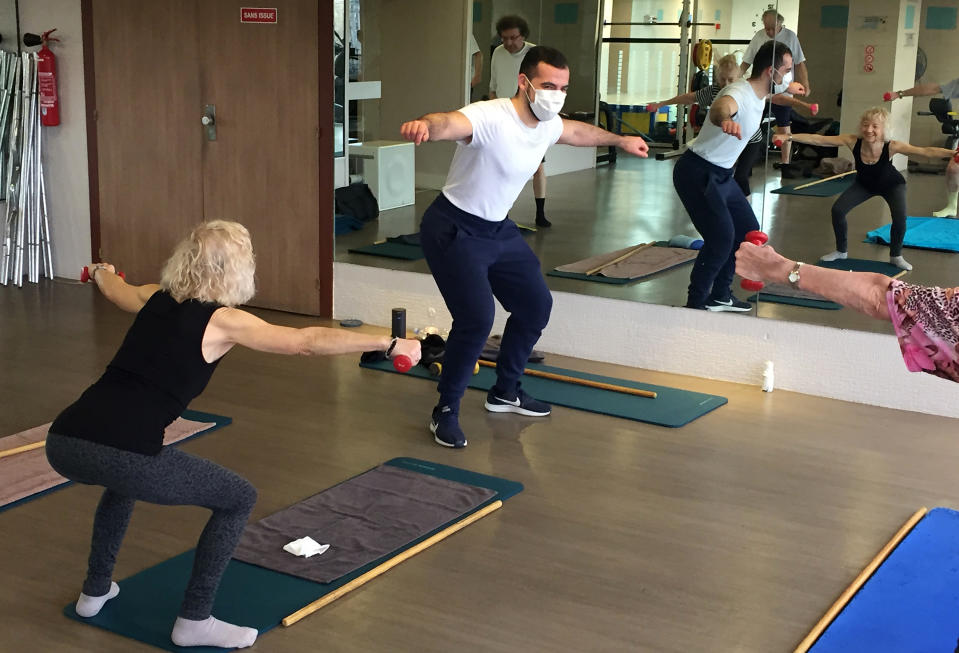Coronavirus now a ‘pandemic’ – how does this differ from an ‘epidemic’ or ‘outbreak’?

Latest coronavirus news, updates and advice
Live: Follow all the latest updates from the UK and around the world
Fact-checker: The number of Covid-19 cases in your local area
Explained: Symptoms, latest advice and how it compares to the flu
The World Health Organization (WHO) has called the coronavirus a “pandemic”, after previously referring to it as an “epidemic” or “outbreak”.
With “thousands fighting for their lives in hospital” and the number of deaths worldwide expected to climb over the next few days, the WHO stated the virus “can be characterised as a pandemic” on Wednesday.
Experts have claimed describing an infection as a “pandemic” highlights how seriously it should be taken.
Many were quick to add, however, the use of the word “does not change anything” when it comes to combatting the virus.

The new strain of the coronavirus, called Covid-19, is thought to have emerged at a seafood and live animal market in the Chinese city Wuhan at the end of 2019.
It has since spread globally into more than 100 countries across every inhabited continent.
Since the infection was identified, more than 126,000 cases have been confirmed worldwide, of which over 80,900 are in mainland China, according to John Hopkins University data.
While it may sound alarming, more than 68,000 patients have “recovered” and are now testing negative for the virus.
Sixteen countries also have just one recorded case, John Hopkins data shows.
Cases have been plateauing in China since the end of February, leaving some optimistic the outbreak may have “peaked” in its epicentre.
South Korea, once the second worst affected country, has also got more of a handle on the situation, with Italy and Iran “overtaking” in terms of patient numbers.
Italy, which is on “lockdown”, has more than 12,400 confirmed cases and over 800 deaths.
More than 27,000 Covid-19 tests have been carried out in the UK, with 460 coming back positive.
Eight Britons have died, of whom six caught the infection in the UK.
Globally, the death toll has exceeded 4,600.
What is a pandemic?
The WHO no longer officially declares “pandemics”.
It made Covid-19 a “global emergency” on 30 January, the highest alarm it can sound.
On 24 February, the WHO’s director-general Dr Tedros Adhanom Ghebreyesus said: “Using the word pandemic now does not fit the facts”.
He changed his stance on Wednesday given the rising number of patients and deaths worldwide.
With the WHO not officially declaring pandemics, the word was used “colloquially”.
Dr Adhanom Ghebreyesus was quick to point out: “Describing the situation as a pandemic does not change WHO’s assessment of the threat posed by this coronavirus.
“It doesn’t change what WHO is doing, and it doesn’t change what countries should do.”
In February 2010, the organisation described a pandemic as “the worldwide spread of a new disease”.
Referencing flu, it described how a new strain could emerge and spread globally, with most people not having immunity.
Seasonal flu tends to affect the elderly or otherwise ill, however, the swine flu pandemic of 2009 “caused most of its severe or fatal disease in younger people, both those with chronic conditions as well as healthy persons”.
This has not been the case with Covid-19, with early data suggesting it is mild in four out of five cases.
Scientists from the Chinese Center for Disease Control and Prevention published information on the first 44,000 cases.
The highest fatality rate was in those aged 80 or over, with 14.8% not recovering from the infection.
In patients up to 39, the fatality rate was 0.2%.
No deaths had been reported in children up to nine years old.
The WHO added “the impact or severity tends to be higher in pandemics in part because of the much larger number of people in the population who lack pre-existing immunity to the new virus”.
Covid-19’s death rate is up for debate, with the WHO claiming it appeared to be 3.4% on 4 March.
Experts called this a likely “overestimate”, with milder cases that do not require treatment potentially going unreported.
Some said a 1% death rate seems more “reasonable”.
The WHO previously described pandemics as potentially having “unusual epidemiological patterns”, with “large outbreaks in the summer months”.
Although unclear how Covid-19 will play out, Yahoo UK previously reported how the virus may ease in warmer months, only to potentially re-emerge in the northern hemisphere’s winter.

How does a pandemic differ from an ‘epidemic’ or ‘outbreak’?
“Epidemics” arise when an “agent”, like a virus, and “susceptible hosts” are “present in adequate numbers”.
This enables the virus to infect people, who are often lacking immunity.
An epidemic may come about from an increase in the number or severity of the virus.
The virus may be introduced to an area where it has never been before, like with Covid-19.
It could also have evolved an “enhanced mode of transmission” that makes the public more exposed.
A change in circumstances could also make people more vulnerable or exposed to the virus.
An outbreak has the same definition as an epidemic, but a “more limited geographical area”.
When it comes to Covid-19, many experts claim “pandemic” is just a word.
“The fact the WHO have started calling the current epidemic a pandemic is not a major change in policy, but rather a recognition that the disease is now spreading globally”, said Professor Paul Hunter from the University of East Anglia.
“No one, not even WHO, declares a pandemic.
“It is only a description of the nature of the global spread of the epidemic.
“Whether the WHO calls an epidemic a ‘pandemic’ or not has no direct consequences.
“The important step was when the epidemic was declared a public health emergency of international concern”.
Dr Ed Wright from the University of Sussex agreed.
“The announcement from the WHO that [Covid-19] is a pandemic does not change anything”, he said.
“Whether it’s referred to as an outbreak, epidemic or pandemic, this virus still poses the same very significant risk to global public, and the advice provided to try and minimise the number of cases is still valid”.
A Unicef spokesperson added: “Characterising Covid-19 as a pandemic is not an indication the virus has become deadlier.
“Rather, it is an acknowledgement of the disease’s geographical spread”.

What is the new coronavirus Covid-19?
Coronaviruses are a class of viruses, with Covid-19 one of seven strains that are known to infect humans.
Others cause the common cold, as well as severe acute respiratory syndrome (Sars), which killed 774 people during its 2002/3 outbreak.
Most of those who initially caught Covid-19 worked at, or visited, the “wet market” in Wuhan.
Officials confirmed early in the outbreak the virus spreads face-to-face via droplets that have been sneezed or coughed out by a patient.
There is also evidence it may be transmitted in faeces and urine.
Covid-19 has no “set” treatment, with most patients fighting off the virus naturally.
In severe cases, pneumonia can come about when the infection causes the alveoli (air sacs) in the lungs to become inflamed and filled with fluid or pus.
The lungs then struggle to draw in air, resulting in reduced oxygen in the bloodstream.
Patients requiring hospitalisation are given “supportive care”, like ventilation, while their immune system gets to work.
To prevent infection, officials recommend regular hand-washing and “social distancing”.

 Yahoo Finance
Yahoo Finance 

